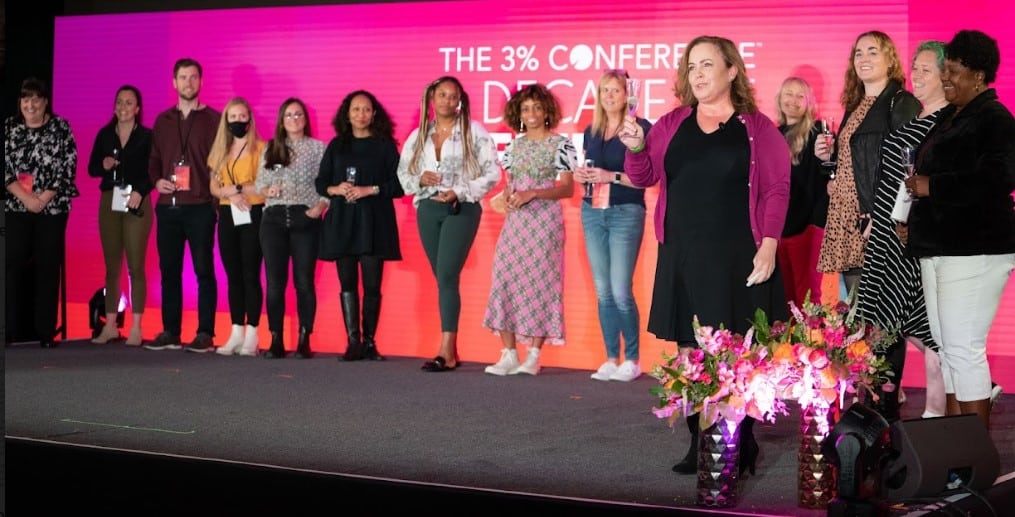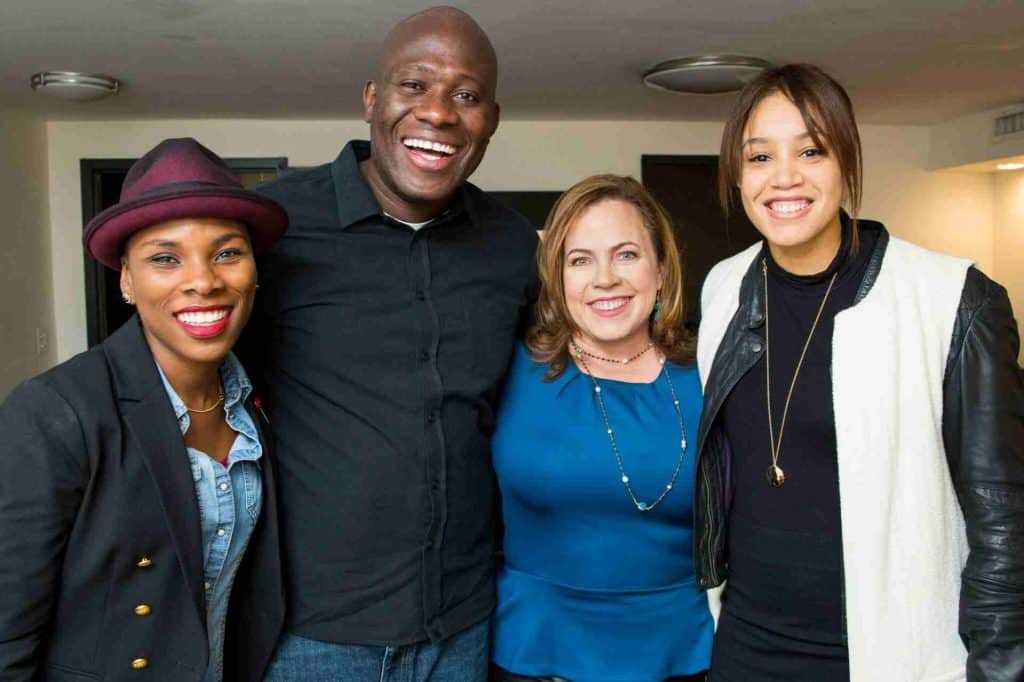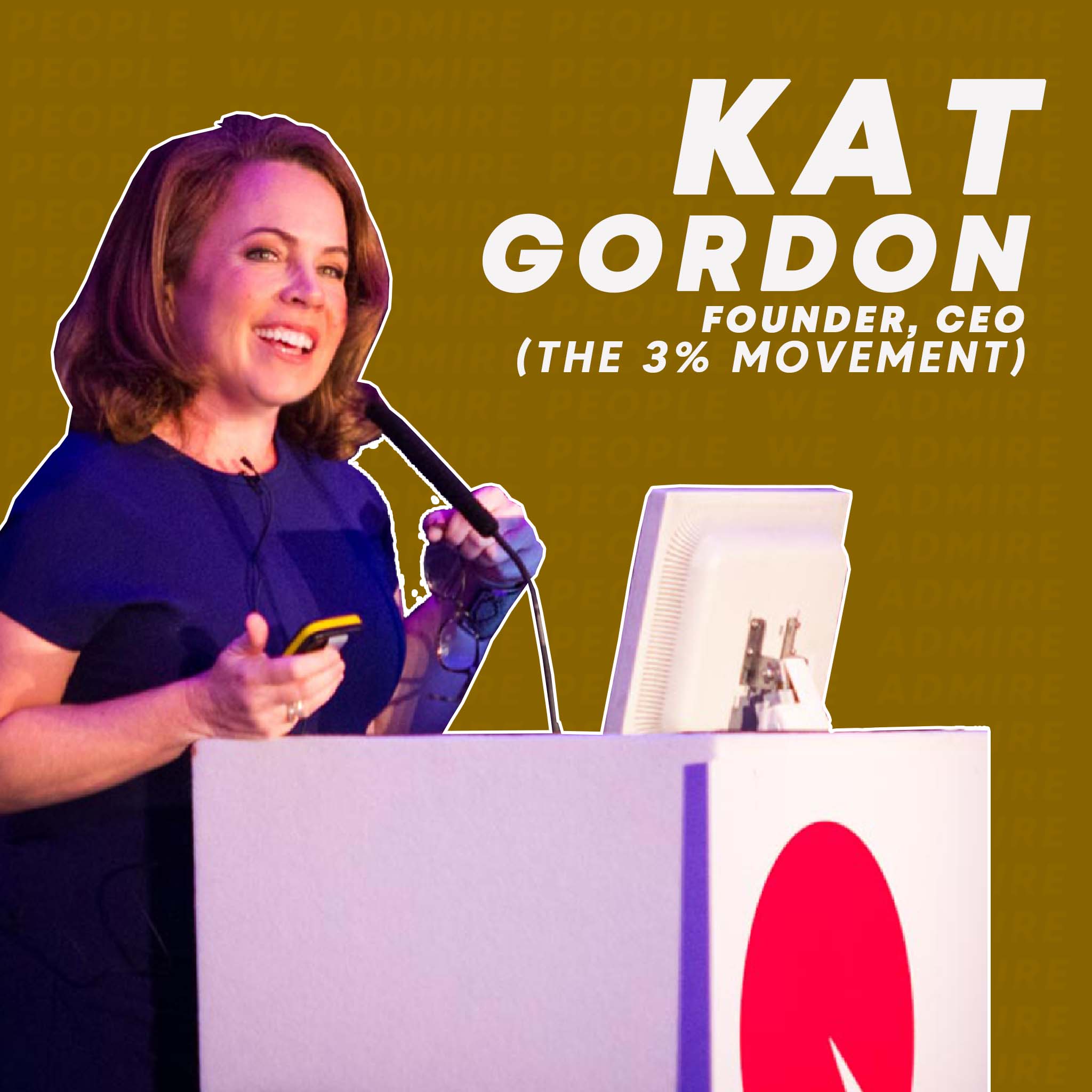CATEGORIES
Financial Confidence | People We Admire | Social ImpactOverview:
- Don’t be afraid to dream about achieving something different and unique—something that hasn’t been created yet.
- Trust your own individual values and pursue what you love.
- Inclusivity is key to any organization, and every member of the community needs to be heard and represented when decisions are made.
How did the 3% movement start?
As a child, I didn’t think I would get to where I am now. I was very shy and didn’t see leaders who looked like me, even in my own family. When I started working and saw the inequality in my industry, I felt called to do something to change that. I never thought that what I put into motion would become what it has, but that is how the 3% movement was born.
Until we came along, only 3% of creative directors were women, and very few were people of color. We have seen that number rise to 29% in just a few years and we’ve played a significant role in supporting that. It hasn’t been easy. We needed to fight a long-held bias, the archetype of a creative director being a white man. It was a challenge to imagine something different. So, one of the things the 3% movement did was to invite audiences to events where the people on stage were incredibly diverse, and when the public realized this was the best event they had been to, where they had felt the most alive, creative and inspired, they drew their own conclusions.
What do you think are the main issues women face in the workplace and how does the 3% movement address those issues?
Pay disparity is one major issue facing women today and the 3% movement has definitely addressed it. We have an equal pay pledge, which companies can join, through which they can be audited to ensure there is no discrimination in their pay system. 3% has also worked against harassment, by publishing studies and research about sexual harassment and abuse in the workplace to raise awareness.
We have done a lot to support motherhood too, which is especially challenging given the small amount of support there is for working mothers in the United States. For example, there is no maternal leave allowance. There is a lot of invisible labor women do at home like tidying up the kitchen, doing the groceries. So, it’s difficult for women to succeed in the corporate world when at home they are shouldering the majority of the work. The bigger frontier here is having men step into their full responsibility with child rearing and domestic tasks, and not calling it “women’s work”. Until then, the corporate world will still be seen as “men’s work”.

What is your process for dealing with creative blocks?
Creativity tends to visit when you make space for it. A lot of creative professionals resist any kind of routine because they think it’s restrictive. But, in reality, I think if you put into place certain conditions that work for you, to inspire you and allow your muse to visit, it’s better. For me, routine should include some kind of movement, when we are not just sitting and looking at a sheet of paper trying to write something brilliant. I think if you go out into nature, move your body, and have periods of silence, inspiration tends to visit you. For example, you may wake up from a dream with a fully formed idea, or you may return from a hike with new thoughts about connecting things.
There is a TED talk where you discuss your inner critic. How do you manage that critical voice in your head?
First of all, that inner voice is a very loving part of your life. It belongs to you. You can’t cut it out and get rid of it. It’s just an inner voice that is trying to keep you safe, so you need to lovingly accept that side of you. What probably happens when that critical voice awakens is you are thinking about something really big, or something that makes you a little nervous, so that voice becomes activated. It is its job to keep you safe. There is a purpose for that voice. But what you can do to feel comfortable with it is acknowledge you are driving the car of your life. You may let the inner critic sit in the back, even thank it for coming along, but not allow it to drive. Fear is a necessary part of life, and of being courageous. There is a healthy fear you should listen to, but you need to be aware that fear does not navigate your life—you do.

As you are at the forefront of creating change and providing opportunities, what is your approach to diversity and inclusivity?
Inclusivity is actually more important. Diversity without inclusivity can be a step back, because if you bring people into a space or community that wasn’t built for them, or where they don’t have a voice to shape the future of the organization, it’s almost cruel. Inclusivity means to have real intersectional diversity at the top levels of the organization, so the needs of all the people in the company are represented when decisions are made.
So whatever movement is being created, it needs to be created by the community, not just about the community. A perfect mantra to have in your organization is, “Nothing about us without us”. Inclusivity happens when the work and the culture are both built by the whole collective instead of by a few.

What advice would you give to women or young people?
Don’t try to become the people around you, but be as much yourself as possible. Don’t dilute or change who you are, but instead really show up as you are. If you were invited to a business room, it means you’ve earned your spot there already, and there is nothing you have to do to prove yourself.
Even if you find yourself in an uncomfortable situation where you are the ‘different’ person, just remember that others have forged that path before. It can be harsh and make you feel defeated, sad, or exhausted. It’s tiring to be the only one who is different. But you know you bring something that nobody else does: your unique perspective. Actually, you are arguably the most valuable person in that room at that point.
I would also say that bringing an entrepreneurial mindset to your whole life will enrich your existence, in addition to what you achieve with it. So, pay attention to what you do when you lose track of time, when you are in a flow, when you just want to read, write, or talk to people about one thing forever, because that’s the thing you should be doing your whole life.
If that thing doesn’t look like a career, change the way you look at it. It could be a career if you gave it all your time and energy. Don’t lose touch with the thing that lights you up and makes you want to get out of bed in the morning. That is a life source and you need to make space for it. Ultimately, when we die, we won’t take any awards with us and nobody will check our bank account. When we die, we want to have a huge smile on our face because we did amazing things and we met people we loved, who loved us too.
Conclusion:
When you get a vastly diverse and at the same time successful company, the audience will draw their own conclusions. Kat Gordon’s journey highlights how one must be fearless in pursuing their dreams, and always be their authentic self. Learn and look for opportunities on the way as you try and work towards an inclusive world.


